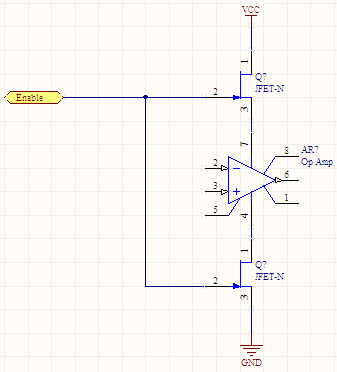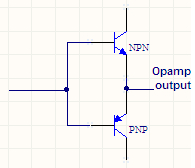hkBattousai
Member

Is there any way to enable/disable an opamp by means of controlling its supply voltage. I want to make opamp run in normal mode when both FETs conduct, and make opamp output high impedance when both FETs are cut-off.
My idea comes from the fact that, most opamps have output driving circuits same as the image below, or can be characterized like that:

My purpose is to desing an "analog multiplexer", after seeing how expensive analog multiplexer ICs are, I decided to desine my own circuit.
There will be several opamp ICs on the board, and a microcontroller is going to select an analog source by enabling one of those opamps. Though there is a problem in my desing: I won't be able to use a quad opamp package.
So, any ideas, could it work?
Last edited:
